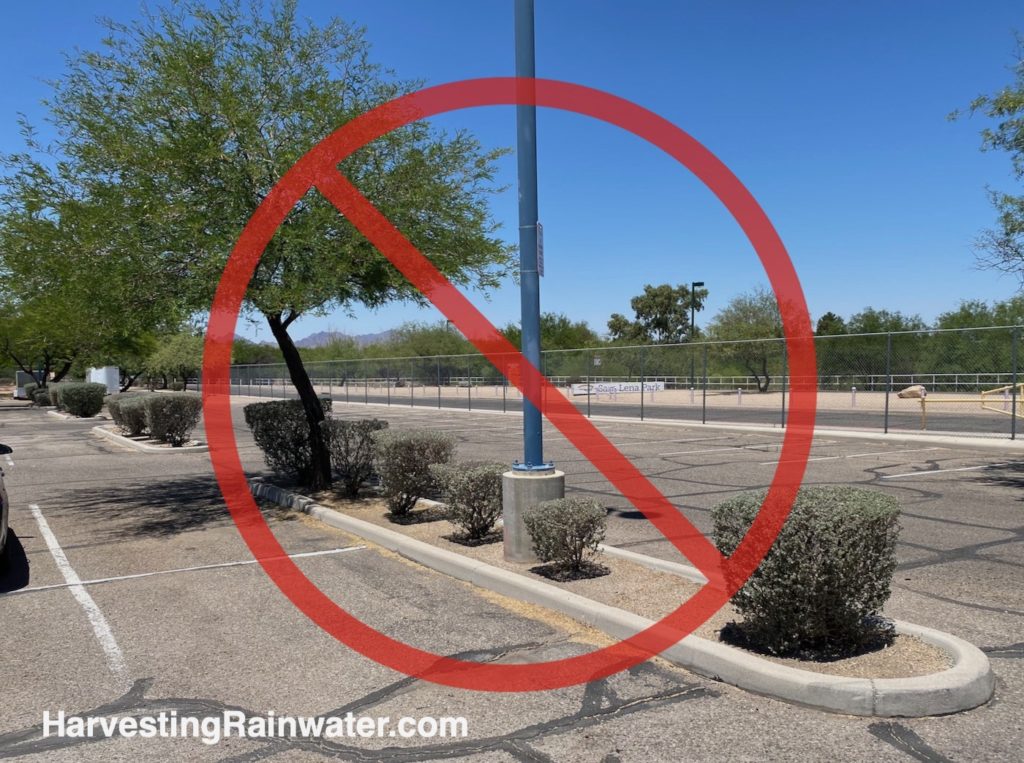Kino Environmental Restoration Project (KERP)
I feel this project marked a shift, when the city and county began to view stormwater as a potential resource (that could be utilized while also controlling flooding), as opposed to a water that they felt had to be drained away for flood control.

Photo: Brad Lancaster, 5-2022
Completed in 2001, this 121-acre site redeveloped an existing unlined stormwater detention basin to harvest urban stormwater; which is used to irrigate reestablished native ecosystems, turf on Kino Sport Complex ball fields, and surrounding landscaping (which saves taxpayers A LOT of money that would otherwise go to paying for pumped in municipal water to irrigate all that turf and landscaping); while also controlling flooding. Additionally, the project includes constructed stream courses, five vegetation-lined ponds, restored native vegetation communities and a recreational path that surrounds the basin.
The total cost was $11 million.
The project was funded by the U.S. Army Corps of Engineers and Pima County. Local contributions toward the project totaled $6 million.

Photo: Pima County

Photo: Brad Lancaster 5-2022.
Potential improvements
What do you think could be improved to make this project even more conducive to regenerating more and healthier life for all?
Here are a couple of thoughts I had…
Overall, I like this project, though I believe irrigation of the non-turf areas/landscape receiving pumped water via drip irrigation plumbing could’ve been much more efficiently and inexpensively done without any pumps, pipes, or plastic irrigation lines by directing runoff from adjoining hardscape surfaces such as roofs, parking lots, roads, and pathways to landscape plantings placed within water-harvesting basins lower than their adjoining hardscape surfaces. (Currently, a number of these landscaped areas are higher than their adjoining hardscape surfaces and their runoff water, so they drain water, rather than harvest it. See how this could be corrected through the good examples at Milagro Co-housing and the Dunbar/Spring rain-irrigated Neighborhood Native Food Forest)

See how this could be corrected through the good examples at Milagro Co-housing and the Dunbar/Spring rain-irrigated Neighborhood Native Food Forest)
Photo: Brad Lancaster
The concrete lining of the waterways that bring stormwater to the project strikes me as another bad example, because this practice is very expensive and dehydrates the watershed by not allowing water to infiltrate the banks and bed of the watercourse.
Additionally, shading/cooling native vegetation was removed to pave the waterways, and the exposed concrete soaks up the sun’s heat during the day and re-radiates it at night, contributing to the heat-island effect, and greater water loss via evaporation due to the increased temperatures.

Photo: Brad Lancaster, 5-2022
For more information see: https://webcms.pima.gov/cms/one.aspx?pageId=68782
Where:
3400 S Country Club Rd, Tucson, AZ 85713
Go to the north side of the Kino Sports Complex site.
32.18364495145412, -110.92822061895832
Hours: Daily 6am to 7pm
Cost: free
This location is included in the following tours:
See the new, full-color, revised editions of Brad’s award-winning books
– available a deep discount, direct from Brad:

Volume 1

